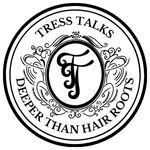Having shiny and strong hair is a desirable trait for many people. Not only does it enhance our appearance, but it also reflects good hair health. However, achieving and maintaining shiny and strong hair requires proper care and attention. In this guide, we will explore various tips and techniques to help you achieve the luscious locks you’ve always dreamed of.
I. Understanding Hair Structure
To understand how to care for your hair, it is important to first understand its structure. Hair is composed of three layers: the cuticle, cortex, and medulla. The cuticle is the outermost layer that protects the inner layers from damage. The cortex provides strength, elasticity, and color, while the medulla is the innermost layer, which is less prevalent in fine hair.
Here are some details about the structure of hair:
1. Cuticle: The cuticle is the outermost layer of the hair shaft and consists of overlapping scales. It acts as a protective barrier, shielding the inner layers of the hair from damage. When the cuticle is smooth and intact, it helps to reflect light, giving the hair a shiny appearance.
2. Cortex: The cortex is the middle layer of the hair shaft and is responsible for the hair’s strength, elasticity, and color. It contains proteins called keratin, which provide structural support to the hair. The cortex also contains melanin, the pigment that gives hair its natural color.
3. Medulla: The medulla is the innermost layer of the hair shaft and is not always present in every hair strand, especially in fine hair. It consists of loosely packed cells and air spaces. The function of the medulla is not fully understood, and its presence or absence does not significantly affect the overall health or appearance of the hair.
4. Hair Follicle: The hair follicle is the structure within the skin from which the hair grows. It consists of a root, bulb, and papilla. The papilla contains blood vessels that supply nutrients and oxygen to the hair follicle, supporting hair growth. The cells in the hair follicle divide and multiply, pushing the hair strand up and out through the scalp.
5. Sebaceous Glands: Sebaceous glands are located near the hair follicles and produce an oily substance called sebum. Sebum helps to moisturize and protect the hair and scalp. However, excessive sebum production can lead to greasy hair, while insufficient sebum can result in dry and brittle hair.
Understanding the structure of hair is essential because it provides insights into how different factors, such as hair care practices, diet, and external influences, can impact its health and appearance. By taking care of the cuticle, maintaining the strength of the cortex, and supporting a healthy hair follicle, you can promote shiny and strong hair.
II. Healthy Hair Care Routine
A. Regular Washing
Washing your hair regularly is essential for maintaining its cleanliness and overall health. However, excessive washing can strip away the natural oils that keep your hair moisturized and shiny. Finding the right balance is key. Aim to wash your hair two to three times a week using a mild shampoo and conditioner suited for your hair type.
B. Conditioning and Deep Conditioning
Conditioning is crucial for replenishing moisture and maintaining hair health. After shampooing, apply a suitable conditioner from mid-length to the ends of your hair. Leave it on for a few minutes before rinsing thoroughly. Additionally, incorporate deep conditioning treatments into your routine once a week to provide extra nourishment and hydration.
C. Avoiding Heat Damage
Excessive heat styling tools, such as straighteners and curling irons, can cause damage to your hair. Minimize the use of these tools or apply a heat protectant spray before styling. Opt for air-drying whenever possible, and if you must use heat, choose the lowest temperature setting.
III. Nourishing from Within
A. Balanced Diet
What you eat can greatly impact the health of your hair. A balanced diet rich in essential nutrients, such as vitamins A, C, E, and B-complex, as well as minerals like zinc, iron, and biotin, can promote healthy hair growth. Include foods such as leafy greens, eggs, fish, nuts, and seeds in your diet to provide the necessary nutrients for strong and shiny hair.
B. Hydration
Drinking an adequate amount of water is not only important for your overall health but also for the health of your hair. Water hydrates your hair strands from within, making them more supple and less prone to breakage. Aim to drink at least eight glasses of water per day to keep your hair and body hydrated.
IV. Protective Styling
A. Minimizing Hair Manipulation
Excessive brushing and styling can lead to hair breakage and damage. Use a wide-toothed comb or a brush with soft bristles to detangle your hair gently. Avoid brushing your hair while it’s wet, as wet hair is more susceptible to breakage.
B. Protective Hairstyles
Protective hairstyles, such as braids, buns, and twists, help to minimize the exposure of your hair to environmental stressors and reduce the risk of damage. These styles also allow your hair to retain moisture and promote healthy growth. Just remember to avoid styles that are too tight or pull on your hair, as this can cause traction alopecia.
Conclusion
Achieving and maintaining shiny and strong hair requires a combination of proper hair care, a balanced diet, and protective styling. By following the tips and techniques outlined in this guide, you can improve the health and appearance of your hair.
Remember to be consistent with your routine and be patient, as it may take time to see noticeable results. With dedication and care, you can enjoy the benefits of luscious, shiny, and strong hair.
